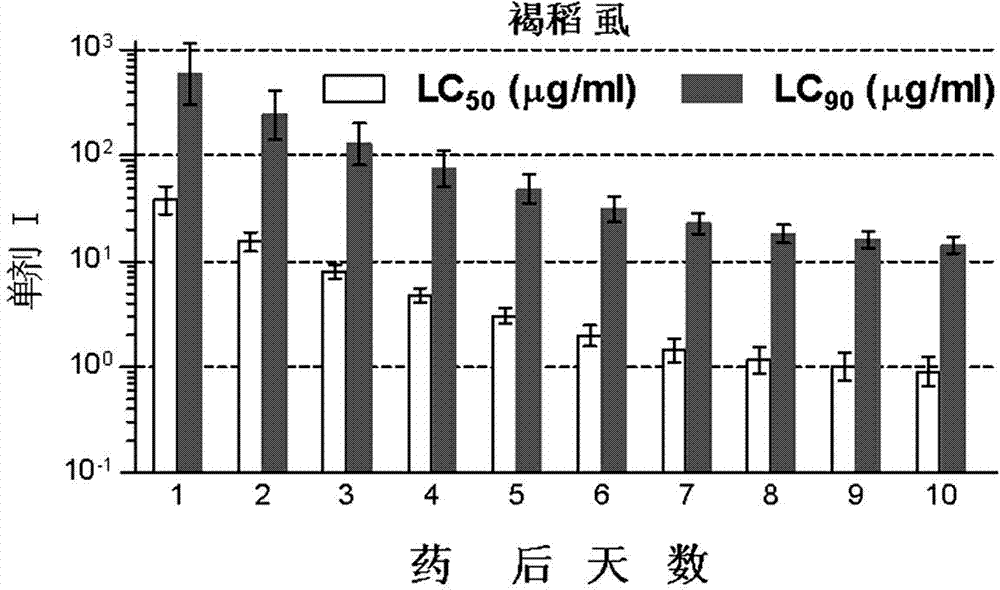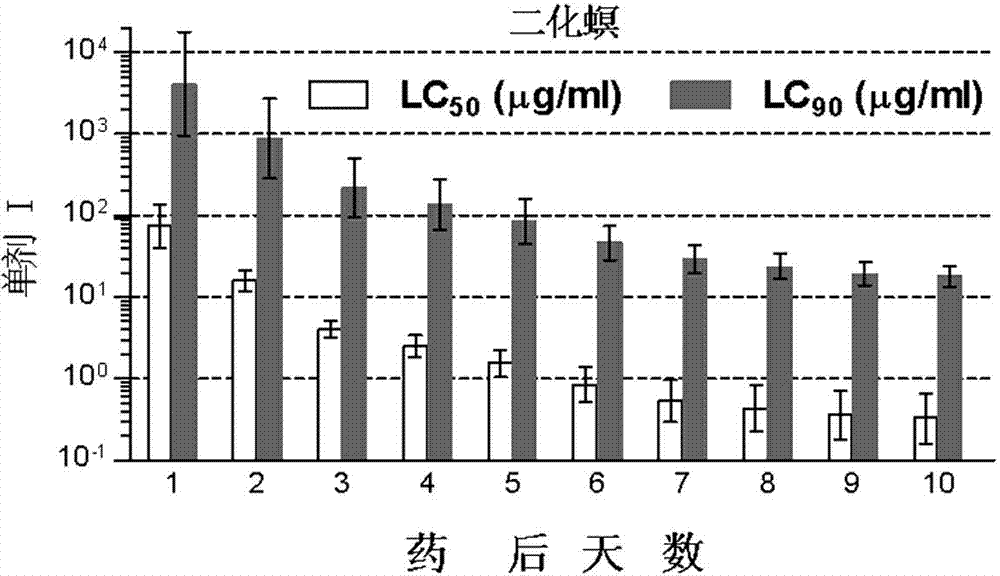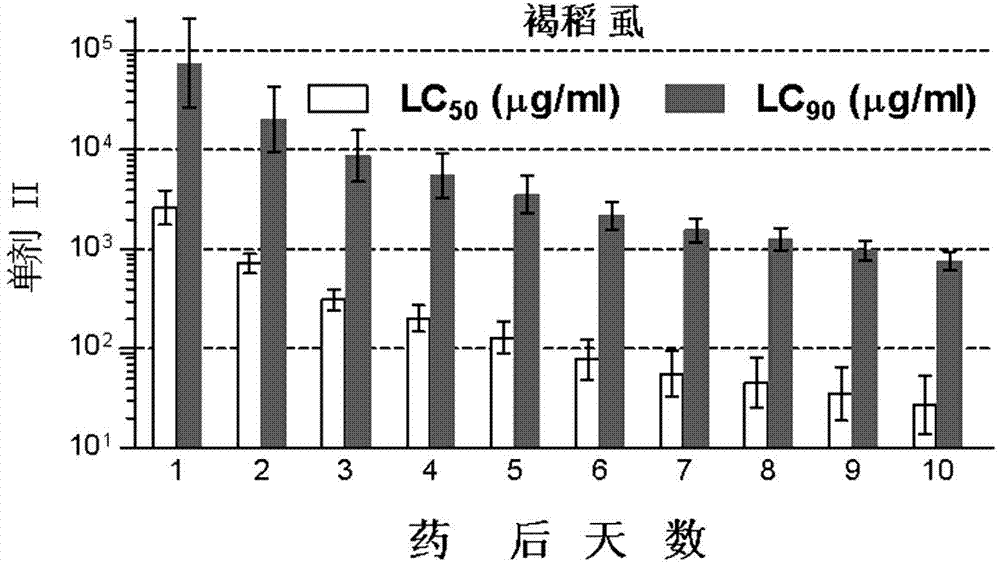Botanical compound insecticide and applications thereof
An insecticide and plant-derived technology, applied in the field of plant-derived pesticides, can solve the problems of target pests resistance, high content of aromatic compounds, and unsatisfactory insecticidal activity, and achieve field application cost reduction and environmental compatibility Good sex, remarkable effect
- Summary
- Abstract
- Description
- Claims
- Application Information
AI Technical Summary
Problems solved by technology
Method used
Image
Examples
Embodiment 1
[0041] Add 10.2 kg of water and 0.025 kg of camptothecin to stirrer A, stir and heat the suspension to 50°C, then slowly add 0.0525 kg of sodium hydroxide, stir until all substances are evenly dissolved, and prepare single dose I. In stirrer B, add 4.046 kg bamboo tar, 0.6808 kg sodium hydroxide, keep stirring until the black sticky bamboo tar turns brown slightly thin semi-fluid, and when the temperature of the reactant turns to room temperature from hot blanching, add 10.27 kg of water, stirred and mixed evenly to prepare single dose II. Then mix the single agent I and the single agent II according to the volume ratio of 1.2:1 to make a mixture, and then add 0.1% sodium lignosulfonate, 0.1% organic silicon, 0.025% ethylene glycol, 0.025% Glycerin, 0.025% sodium polyacrylate, 0.025% salt, fully stirred and mixed to form a compound agent.
Embodiment 2
[0043] Add 8.98 kg of water and 0.076 kg of camptothecin to the mixer A, stir and heat the suspension to 52°C, then slowly add 0.0633 kg of sodium hydroxide, stir until all substances are uniformly dissolved, and prepare the single agent I. Add bamboo tar 6.321 kg and sodium hydroxide 0.8216 kg in stirrer B, keep stirring until the black sticky bamboo tar turns brown and slightly thin semi-fluid, and when the temperature of the reactant is transferred to room temperature from blanching, add 9.02 kg of water, stir and mix evenly to prepare single dose II. Then, mix the single agent I and the single agent II according to the volume ratio of 1:1.2 to make a mixture, then add 0.4% of the weight of the mixture of silicone, 0.2% of glycerin, and 0.2% of sodium polyacrylate, and fully stir and mix. Mix evenly to form a compound agent.
Embodiment 3
[0045] Add 9.95 kg of water and 0.05 kg of camptothecin to the mixer A, stir and heat the suspension to 53°C, then slowly add 0.0562 kg of sodium hydroxide, stir until all substances are dissolved evenly, and prepare the single agent I. Add bamboo tar 4.5 kg and sodium hydroxide 0.729 kg in stirrer B, keep stirring until the black sticky bamboo tar turns brown and slightly thin semifluid, and when the temperature of the reactant is transferred from hot to room temperature, add water 10.0 kg, stir and mix evenly to form a single dose II. Then, mix the single agent I and the single agent II according to the volume ratio of 1:1 to make a mixture, then add 0.3% sodium lignosulfonate, 0.15% ethylene glycol, and 0.05% table salt by weight of the mixture, and stir thoroughly Mix well to form a compound.
PUM
 Login to View More
Login to View More Abstract
Description
Claims
Application Information
 Login to View More
Login to View More - R&D
- Intellectual Property
- Life Sciences
- Materials
- Tech Scout
- Unparalleled Data Quality
- Higher Quality Content
- 60% Fewer Hallucinations
Browse by: Latest US Patents, China's latest patents, Technical Efficacy Thesaurus, Application Domain, Technology Topic, Popular Technical Reports.
© 2025 PatSnap. All rights reserved.Legal|Privacy policy|Modern Slavery Act Transparency Statement|Sitemap|About US| Contact US: help@patsnap.com



